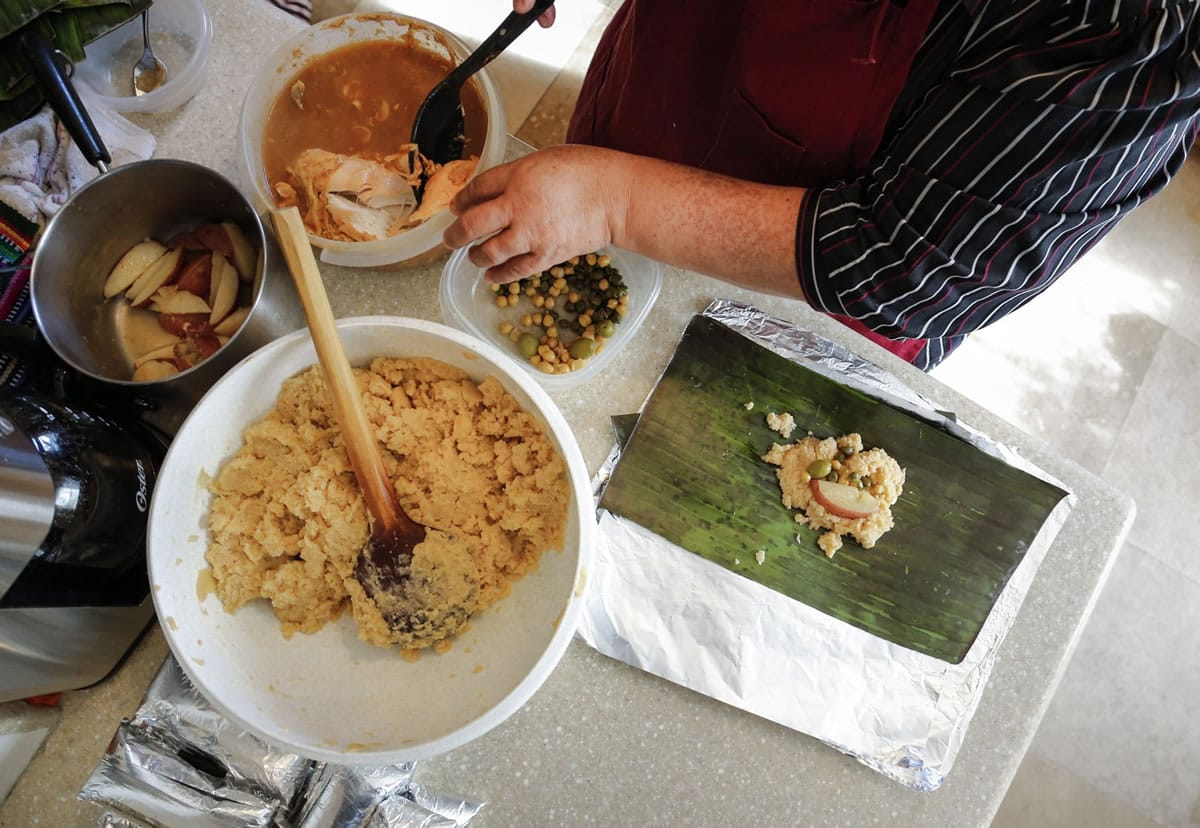LOS ANGELES — “There’s a rhythm to it, the way she works the masa,” Cynthia Gonzalez says quietly. Her mother, Dora, carefully stirs a large pot of masa for tamales over the stove. It’s smooth as custard and lightly fragrant as it begins to bubble.
Salvadoran tamales are Dora’s specialty. They have been passed down, mother to daughter, for generations.
Cynthia, Dora’s only daughter, had never had any interest in cooking.
“It wasn’t my passion to be in the kitchen,” she says. “Since I was little, I was told women were supposed to be in the kitchen. And I was so against that. Why can’t women do other things?
“I loved to write.”
A poet, Cynthia has been writing and performing since 2006; her first book, “Suspendidos en el Tiempo,” was released in 2010. A second book is due out next year. She was raised in South Los Angeles, and much of her work weaves imagery from a sometimes rough childhood and Salvadoran culture.



